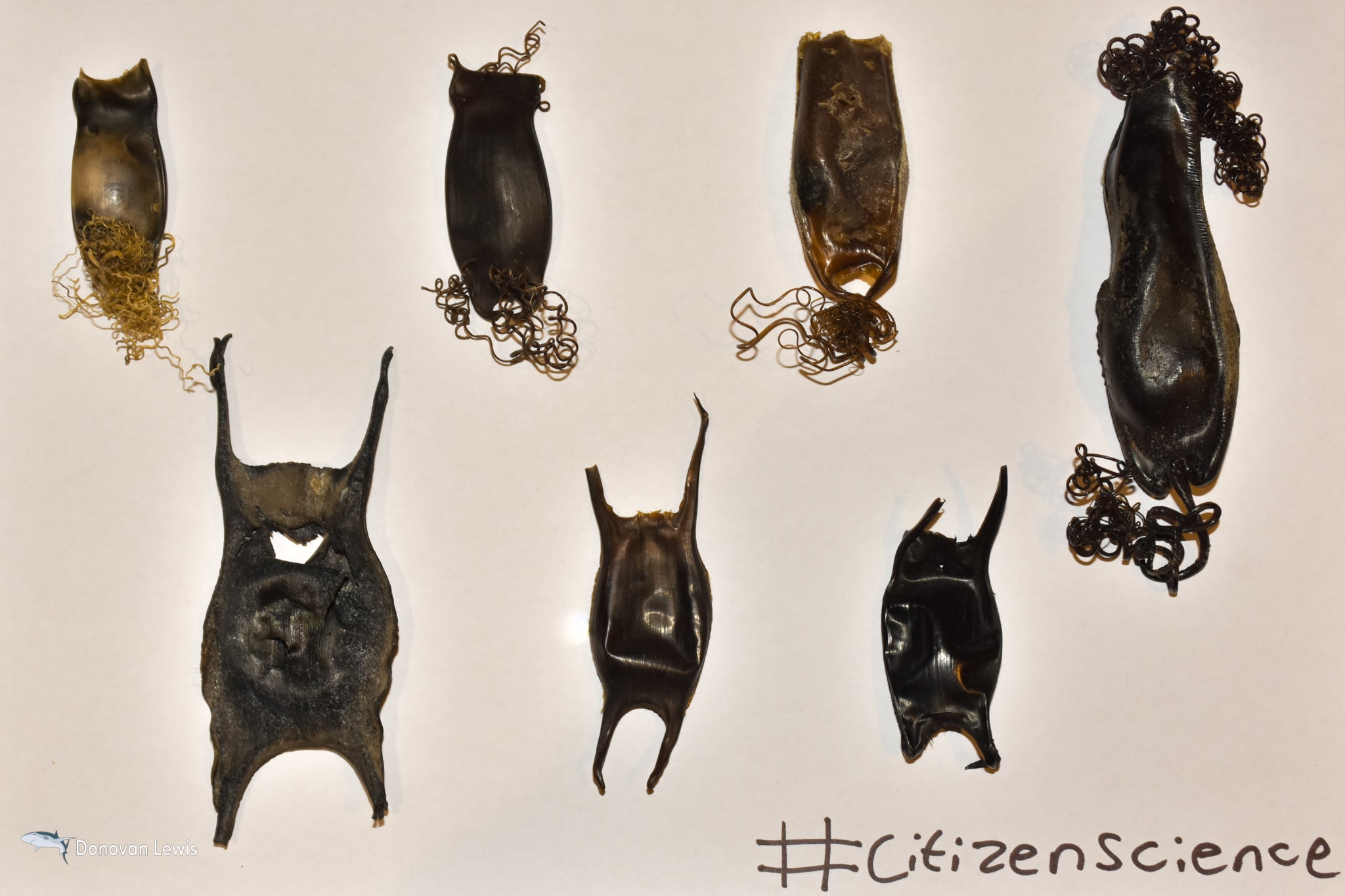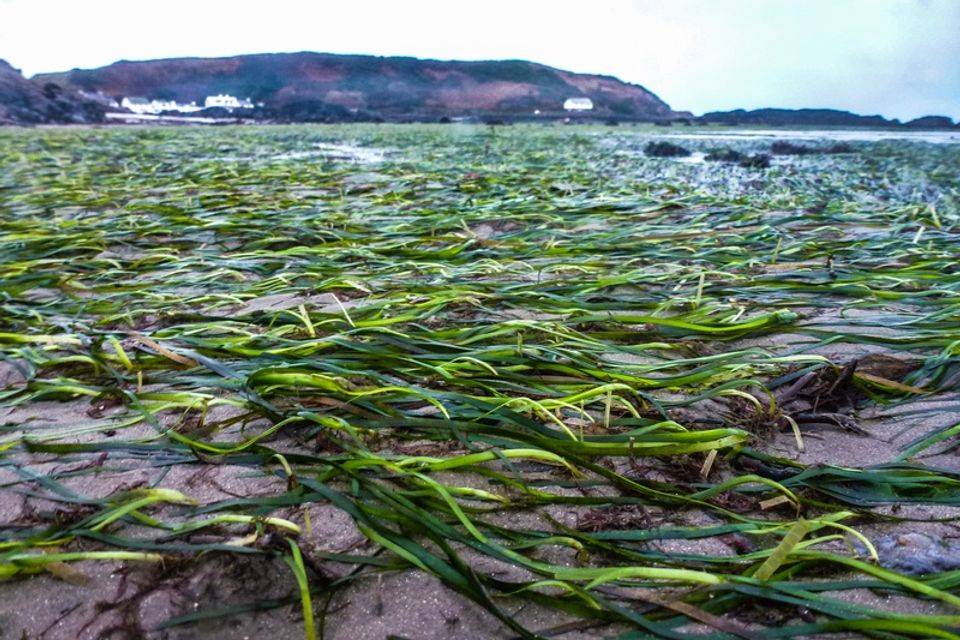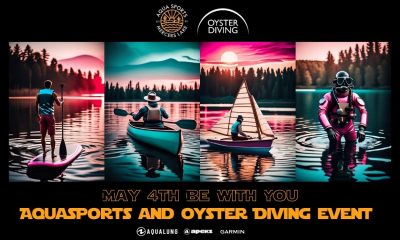Marine Life & Conservation Blogs
Western Ecology Tour: Get W.E.T for Science

They say that if you can dive in the UK you can dive anywhere, but what does this say for the British Coastline and Diving? That’s a question that’s going to be answered by a team of avid and passionate divers and Biologists from across the UK during the upcoming summer of 2021.
The Expedition is being led by Andy Clark (Andy The Northern Diver) of @fancy_a_brew_podcast, along with a team consisting of photographers, camera operators and biologists. They are embarking on a British diving expedition known as the Western Ecology Tour (W.E.T). The aim of the expedition is to travel to the northern reaches of Scotland and dive at Loch Carron & Loch Duich and then travel South along the West Coast to the Llŷn Peninsula in North Wales, and finally onto Pembrokeshire, diving the best the west has to offer.
The expedition is looking to live life in a minimalist way, camping and cooking out in the open air.
The teams aim is not just to dive sites, but to tackle conservation issues and shed light on projects up and down the UK, they have three projects which the trip will be focusing on. These projects include the Shark & Skate Citizen Science Scotland, Project Seagrass, and Neptune’s Army of Rubbish Cleaners (NARC). The team will be accompanied with a Biologist or expert that works on each of the 3 projects to aid and guide the team, but also help shed extra light on the critical conservation work being carried out.
The team are also aiming to gain media coverage with the support of sponsors, and will include a series of live blogs for Scubaverse. This will be used to promote the unique range of life that lives around the UK, and advertise the projects and charities that the team will be working with.
Shark & Skate Citizen Science Scotland
The Shark & Skate Citizen Science Scotland Project is headed up by Dr Lauren Smith and is set up to obtain vital information about various Shark and Ray species found in Scottish waters. There has recently been a discovery of an Egg laying site for the critically endangered Flapper Skate, this Skate species was once known as the Common Skate, but their numbers have been reduced so much that they are now classed as a Critically Endangered species due to the disturbance of their breeding grounds. Dr Lauren Smith and her colleagues are working to have the site listed as an official Marine Protected Area, this would help reduce disturbance and damage to the breeding site and eggs as fishing activities would be prohibited from within the site.
https://www.facebook.com/groups/sharkandskatecitizensciencescotland
Project Seagrass
The Project Seagrass element is led by Jake Davies, his work is focused on the conservation of Seagrass Ecosystems by informing the local communities to the presence of the Seagrass meadows that hug the Welsh Coastline, and educating the public to the vast importance that this habitat plays in our Oceans health. Seagrass is the only true plant in our oceans, this habitat is home to a whole host of animals from Rays, Seals and Seahorses and is vitally important in our fight against Climate Change.
Neptune’s Army of Rubbish Cleaners (NARC)
NARC is supported by Charlie Young, and it is an award-winning Charity that has been fighting to keep the British Coastline litter free since 2005, and was the UK’s first underwater clean up group. NARC consist of volunteer divers who devote their own time and resources to carry out these clean-up operations and to raise awareness of the impacts of pollution on local wildlife. Divers involved in the project are armed with scissors, bags and trays in order to collect as much rubbish as they can, the team have found a huge range of rubbish from the seabed which varies from mobile phones, bikes, chairs, skateboards and a kitchen sink! The most abundant rubbish however is that of discarded fishing gear such as nets, fishing line and lobster pots, anything collected is then cleaned and recycled wherever possible.
The Expedition is hoping to raise over £6,000 using a mix of corporate sponsorship and crowd funding using their JustGiving page which can be found here: www.justgiving.com/
Donations are being used for 2 areas of the expedition, the first is a hope that £2000 per project be raised, with the money going towards equipment and the running of their operations one of which is for supplies and costs such as site entry and fuel, and the other being. Any further funds would be to supplement the overall cost of the expedition for such things as fuel, campsite entry and air fills.
If you’d like any further information and to keep up to date with Expedition Wester Ecology Tour check out the webpage https://andythenortherndiver.com/expedition-wet/
Marine Life & Conservation Blogs
Creature Feature: Dusky Shark

 In this series, the Shark Trust will be sharing amazing facts about different species of sharks and what you can do to help protect them.
In this series, the Shark Trust will be sharing amazing facts about different species of sharks and what you can do to help protect them.
This month we’re taking a look at the Dusky Shark, a highly migratory species with a particularly slow growth rate and late age at maturity.
Dusky sharks are one of the largest species within the Carcharhinus genus, generally measuring 3 metres total length but able to reach up to 4.2 metres. They are grey to grey-brown on their dorsal side and their fins usually have dusky margins, with the darkest tips on the caudal fin.
Dusky Sharks can often be confused with other species of the Carcharhinus genus, particularly the Galapagos Shark (Carcharhinus galapagensis). They have very similar external morphology, so it can be easier to ID to species level by taking location into account as the two species occupy very different ecological niches – Galapagos Sharks prefer offshore seamounts and islets, whilst duskies prefer continental margins.
Hybridisation:
A 2019 study found that Dusky Sharks are hybridising with Galapagos Sharks on the Eastern Tropical Pacific (Pazmiño et al., 2019). Hybridisation is when an animal breeds with an individual of another species to produce offspring (a hybrid). Hybrids are often infertile, but this study found that the hybrids were able to produce second generation hybrids!
Long distance swimmers:
Dusky sharks are highly mobile species, undertaking long migrations to stay in warm waters throughout the winter. In the Northern Hemisphere, they head towards the poles in the summer and return southwards towards the equator in winter. The longest distance recorded was 2000 nautical miles!
Very slow to mature and reproduce:
The Dusky Shark are both targeted and caught as bycatch globally. We already know that elasmobranchs are inherently slow reproducers which means that they are heavily impacted by overfishing; it takes them so long to recover that they cannot keep up with the rate at which they are being fished. Dusky Sharks are particularly slow to reproduce – females are only ready to start breeding at roughly 20 years old, their gestation periods can last up to 22 months, and they only give birth every two to three years. This makes duskies one of the most vulnerable of all shark species.
The Dusky Shark is now listed on Appendix II of the Convention on the Conservation of Migratory Species (CMS), but further action is required to protect this important species.
Scientific Name: Carcharhinus obscurus
Family: Carcharhinidae
Maximum Size: 420cm (Total Length)
Diet: Bony fishes, cephalopods, can also eat crustaceans, and small sharks, skates and rays
Distribution: Patchy distribution in tropical and warm temperate seas; Atlantic, Indo-Pacific and Mediterranean.
Habitat: Ranges from inshore waters out to the edge of the continental shelf.
Conservation status: Endangered.
For more great shark information and conservation visit the Shark Trust Website
Images: Andy Murch
Diana A. Pazmiño, Lynne van Herderden, Colin A. Simpfendorfer, Claudia Junge, Stephen C. Donnellan, E. Mauricio Hoyos-Padilla, Clinton A.J. Duffy, Charlie Huveneers, Bronwyn M. Gillanders, Paul A. Butcher, Gregory E. Maes. (2019). Introgressive hybridisation between two widespread sharks in the east Pacific region, Molecular Phylogenetics and Evolution 136(119-127), https://doi.org/10.1016/j.ympev.2019.04.013.
Marine Life & Conservation Blogs
Creature Feature: Undulate Ray

 In this series, the Shark Trust will be sharing amazing facts about different species of sharks and what you can do to help protect them.
In this series, the Shark Trust will be sharing amazing facts about different species of sharks and what you can do to help protect them.
This month we’re looking at the Undulate Ray. Easily identified by its beautiful, ornate pattern, the Undulate Ray gets its name from the undulating patterns of lines and spots on its dorsal side.
This skate is usually found on sandy or muddy sea floors, down to about 200 m deep, although it is more commonly found shallower. They can grow up to 90 cm total length. Depending on the size of the individual, their diet can range from shrimps to crabs.
Although sometimes called the Undulate Ray, this is actually a species of skate, meaning that, as all true skates do, they lay eggs. The eggs are contained in keratin eggcases – the same material that our hair and nails are made up of! These eggcases are also commonly called mermaid’s purses and can be found washed up on beaches all around the UK. If you find one, be sure to take a picture and upload your find to the Great Eggcase Hunt – the Shark Trust’s flagship citizen science project.
It is worth noting that on the south coasts, these eggcases can be confused with those of the Spotted Ray, especially as they look very similar and the ranges overlap, so we sometimes informally refer to them as ‘Spundulates’.
Scientific Name: Raja undulata
Family: Rajidae
Maximum Size: 90cm (total length)
Diet: shrimps and crabs
Distribution: found around the eastern Atlantic and in the Mediterranean Sea.
Habitat: shelf waters down to 200m deep.
Conservation Status : As a commercially exploited species, the Undulate Ray is a recovering species in some areas. The good thing is that they have some of the most comprehensive management measures of almost any elasmobranch species, with both minimum and maximum landing sizes as well as a closed season. Additionally, targeting is entirely prohibited in some areas. They are also often caught as bycatch in various fisheries – in some areas they can be landed whilst in others they must be discarded.
IUCN Red List Status: Endangered
For more great shark information and conservation visit the Shark Trust Website
Image Credits: Banner – Sheila Openshaw; Illustration – Marc Dando
-

 News3 months ago
News3 months agoHone your underwater photography skills with Alphamarine Photography at Red Sea Diving Safari in March
-

 News3 months ago
News3 months agoCapturing Critters in Lembeh Underwater Photography Workshop 2024: Event Roundup
-

 Marine Life & Conservation Blogs2 months ago
Marine Life & Conservation Blogs2 months agoCreature Feature: Swell Sharks
-

 Blogs2 months ago
Blogs2 months agoMurex Resorts: Passport to Paradise!
-

 Blogs2 months ago
Blogs2 months agoDiver Discovering Whale Skeletons Beneath Ice Judged World’s Best Underwater Photograph
-

 Gear Reviews3 months ago
Gear Reviews3 months agoGear Review: Oceanic+ Dive Housing for iPhone
-

 Marine Life & Conservation2 months ago
Marine Life & Conservation2 months agoSave the Manatee Club launches brand new webcams at Silver Springs State Park, Florida
-

 News3 months ago
News3 months agoWorld’s Best Underwater Photographers Unveil Breathtaking Images at World Shootout 2023

























